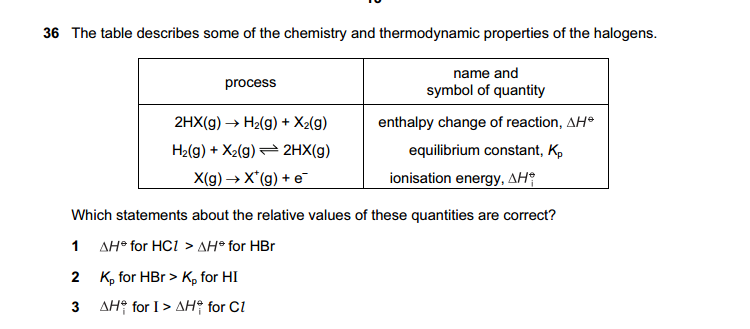- Messages
- 603
- Reaction score
- 1,102
- Points
- 153
W06qp1
Just take 10cm3 of CH4 as example and form a balance eqn
CH4 + 2O2 --> CO2 + 2H2O
We will use up 20 cm3 of O2 and produce 10 cm3 of CO2.
So 50 cm3 of unused O2 and 10 cm3 of CO2 gives us total of 60cm3 of gas for CH4.
So its graph D if we look at CH4.



